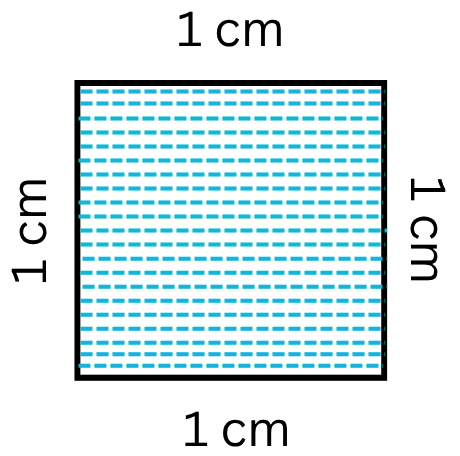Subscribe to our ▶️YouTube channel🔴 for the latest videos, updates, and tips.
Home | About Us | Contact Us | Privacy | Math Blog
Similar and Dissimilar Surds
We will discuss about similar and dissimilar surds and their definitions.
Definition of Similar Surds:
Two or more surds are said to be similar or like surds if they have the same surd-factor.
or,
Two or more surds are said to be similar or like surds if they can be so reduced as to have the same surd-factor.
For example 2√2, 22√2, 52√2, 72√2 are similar surds as all the surds contain same irrational factor 2√2. So the order of the surds and the radicands both should be same for similar surds.
Consider the following surds 22√3, 42√27, 72√243, 52√75
The above surds have different irrational factor or surd factor but they can be reduced to same irrational factor containing 2√3.
42√27 = 42√9×3 = 42√32×3= 122√3
72√243 = 72√81×3 = 42√92×3 = 362√3
52√75 = 52√25×3 = 52√52×3 = 252√3
From the above example it can be seen that the first surd has the irrational factor 2√3, but other three surds which have irrational factors 2√27, 2√243, 2√75 respectively and can be reduced to 2√3. So the above surds are also similar surds.
More example,
(i) √5, 7√5, 10√5, -3√5, 51/2, 10 ∙ √5, 12 ∙ 51/2 are similar surds;
(ii) 7√5, 2√125, 52/5are similar surds since 2√125 = 2 ∙ √5∙5∙5 = 2√5 and 55/2 =√55 = √5∙5∙5∙5∙5 = 25√5 i.e., each of the given surds can be expressed with the same surd-factor √5.
Definition of Dissimilar Surds:
Two or more surds are said to be dissimilar or unlike when they are not similar.
If two or more surds don’t have same surd factor or can’t be reduced to same surd factor, then surds are called as dissimilar surds. For example 2√3, 23√3, 52√6, 74√3 are dissimilar surds as all the surds contain different irrational factors as 2√3, 3√3, 2√6, 4√3. If the order of the surds or the radicands are different or can’t be reduced to a surd with same order and radicand, the surds will be dissimilar surds.
Now we will see if the following surds are similar or dissimilar.
32√3, 42√12, 52√18, 73√3
The first surd is 32√3 which has the irrational factor 2√3, we have to check whether other surds have the same irrational factor or not.
The second surd is
42√12= 42√4×3= 42√22×3= 82√3
So the second surd can be reduced to 82√3 which has the irrational factor 2√3.
Now the third surd is
52√18= 52√9×2= 42√32×2= 122√2
The third surd doesn’t contain irrational factor 2√3 and also the forth surds has the order 3, so the above set of four surds are dissimilar surds.
For checking the surds are similar or dissimilar, we need to reduce the surds irrational factor of the surds which is lowest among the surds and match with other surds if it is same, then we can call it as similar or dissimilar surds.
More example, √2, 9√3, 8√5, ∛6, ∜17, 75/6 are unlike surds.
Note: A given rational number can be expressed in the form of a surd of any desired order.
For example, 4 = √16 = ∛64 = ∜256 = n√4n
In general, if a he a rational number then,
x = √x2 = ∛x3 = ∜x4 = n√xn.
11 and 12 Grade Math
From Similar and Dissimilar Surds to HOME PAGE
Didn't find what you were looking for? Or want to know more information about Math Only Math. Use this Google Search to find what you need.
Recent Articles
-
Volume of a Cube | How to Calculate the Volume of a Cube? | Examples
Jul 22, 25 03:02 PM
A cube is a solid box whose every surface is a square of same area. Take an empty box with open top in the shape of a cube whose each edge is 2 cm. Now fit cubes of edges 1 cm in it. From the figure i… -
Volume of a Cuboid | Volume of Cuboid Formula | How to Find the Volume
Jul 20, 25 12:58 PM
Cuboid is a solid box whose every surface is a rectangle of same area or different areas. A cuboid will have a length, breadth and height. Hence we can conclude that volume is 3 dimensional. To measur… -
5th Grade Volume | Units of Volume | Measurement of Volume|Cubic Units
Jul 20, 25 10:22 AM
Volume is the amount of space enclosed by an object or shape, how much 3-dimensional space (length, height, and width) it occupies. A flat shape like triangle, square and rectangle occupies surface on… -
Worksheet on Area of a Square and Rectangle | Area of Squares & Rectan
Jul 19, 25 05:00 AM
We will practice the questions given in the worksheet on area of a square and rectangle. We know the amount of surface that a plane figure covers is called its area. 1. Find the area of the square len… -
Area of Rectangle Square and Triangle | Formulas| Area of Plane Shapes
Jul 18, 25 10:38 AM
Area of a closed plane figure is the amount of surface enclosed within its boundary. Look at the given figures. The shaded region of each figure denotes its area. The standard unit, generally used for…






New! Comments
Have your say about what you just read! Leave me a comment in the box below. Ask a Question or Answer a Question.